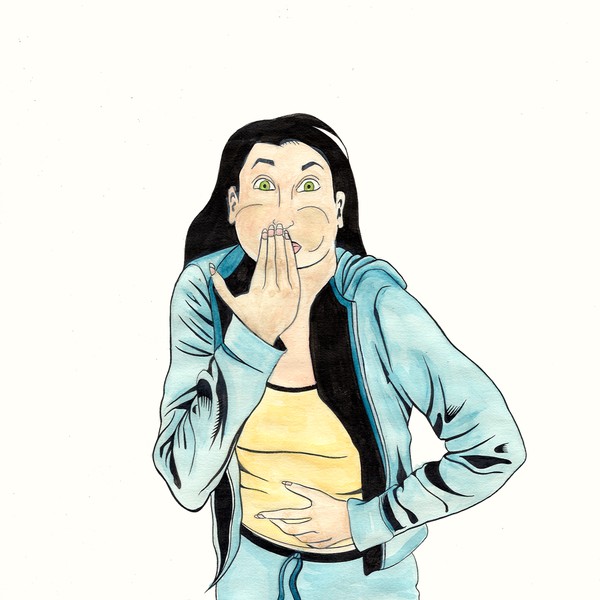|
Vomiting (Nausea)
 Most of the time,
nausea and vomiting go away on their own as quickly as they started and can be
managed at home. Most of the time,
nausea and vomiting go away on their own as quickly as they started and can be
managed at home.
Treatment for nausea and vomiting usually
involves medicine to decrease the nausea and fluid replacement for dehydration.
The mainstay of home treatment is to drink
fluids. Fluid intake helps correct electrolyte imbalance, which may stop
vomiting. This means drinking fluids, which may be the farthest thing from your
mind. But it is vital to prevent yourself from becoming dehydrated from fluid
loss.
- Start with small
amounts, such as 4-8 ounces at a time for adults and 1 ounce or less at a time
for children. Only use clear liquids (such as clear soup broth, juice,
lemon-lime soda). If you're not sure if it's clear, put the liquid in a clear
glass bowl and try to read something through it. If you can't read, it's not
clear.
- Avoid milk and any
dairy products. They can make your nausea and vomiting worse.
- Work your way up to
soft foods, gelatin, oatmeal, yogurt, and similar soft foods and go back to
liquids if the nausea and vomiting return.
Dehydration in children: Children
should be given oral rehydration solutions such as Pedialyte, Rehydrate, Resol,
and Rice-Lyte.
- Cola, tea, fruit
juice, and sports drinks will not correctly replace fluid or electrolytes lost
from vomiting. Nor will plain water. In addition, plain water will not
replace electrolytes and may dilute electrolytes to the point of seizures.
- In underdeveloped
nations or regions without available commercial pediatric drinks, the World
Health Organization has established a field recipe for fluid rehydration: Mix
2 tablespoons of sugar (or honey) with ¼ teaspoon of table salt and ¼ teaspoon
of baking soda. (Baking soda may be substituted with ¼ teaspoon of table
salt.) Mix in 1 liter (1 qt) of clean or previously boiled water.
Dehydration in adults: Although
adults and adolescents have a larger electrolyte reserve than children,
electrolyte imbalance and dehydration may still occur as fluid is lost through
vomiting. Severe symptoms and dehydration usually develop as complications of
medication use or chronic diseases such as diabetes or kidney failure. But
symptoms may occur in healthy people.
- Initially, adults
should eat ice chips and clear, non-caffeinated, non-dairy liquids such as
Gatorade, ginger ale, fruit juices, and Kool-Aid or other commercial drink
mixes.
- After 24 hours of
fluid diet without vomiting, begin a soft-bland solid diet such as the BRAT
diet: bananas, rice, applesauce without sugar, toast, pasta, and potatoes.
Medical Treatment
- Fluids are given by
mouth if you can keep them down, or through a vein into the bloodstream. The
IV route is a common way to give fluids back to the body in moderate to severe
dehydration.
- Treatment will also
be given for the specific cause, if found.
-
First Aid Case List -
back to top - |
 Most of the time,
nausea and vomiting go away on their own as quickly as they started and can be
managed at home.
Most of the time,
nausea and vomiting go away on their own as quickly as they started and can be
managed at home.